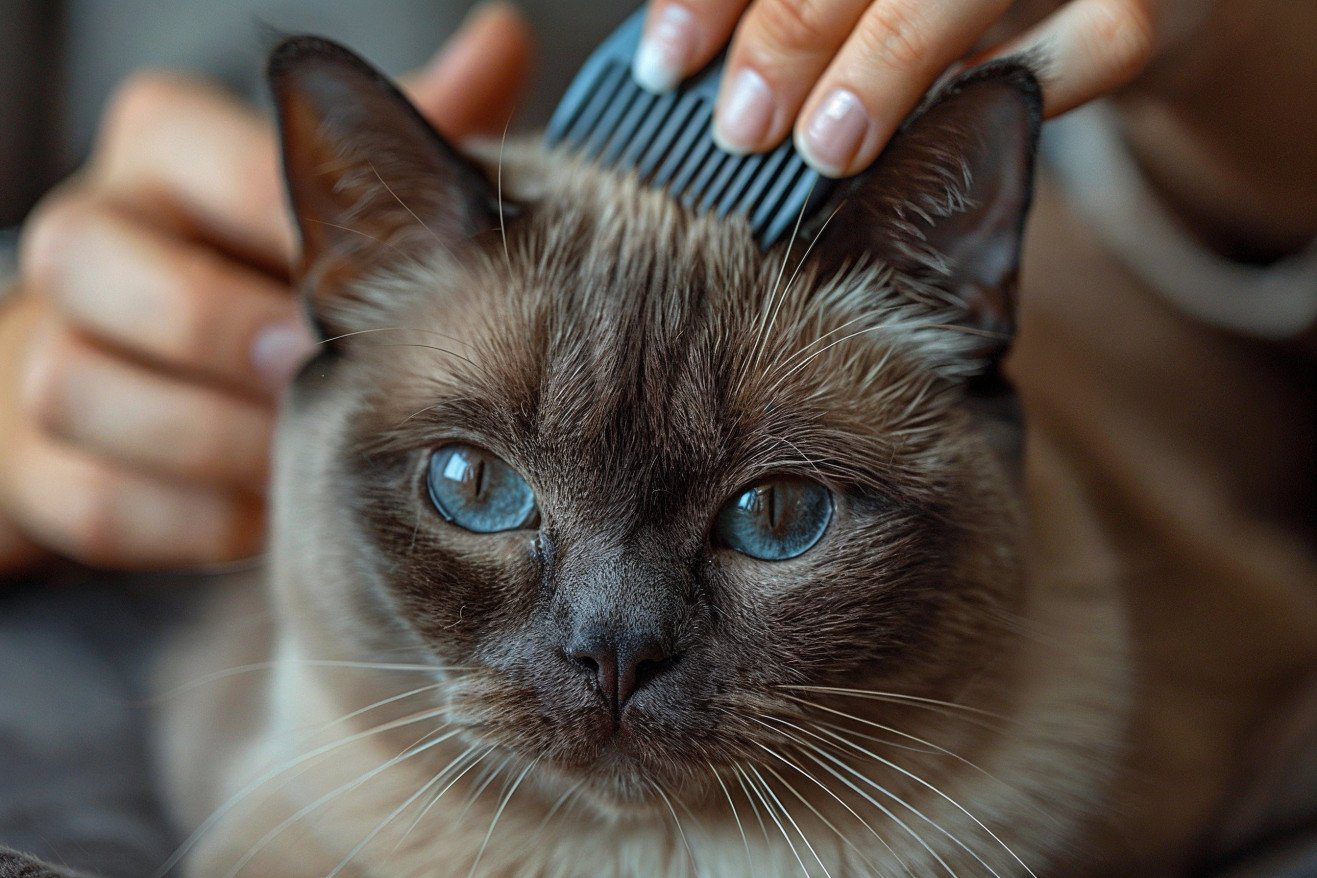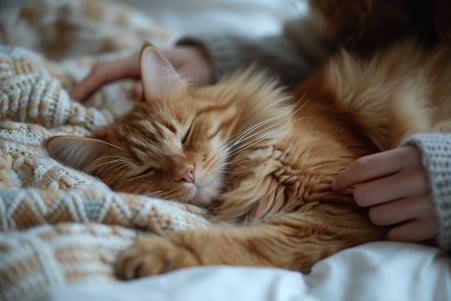Can Cats Get Lice from Humans? Understanding Cross-Species Transmission
28 May 2024 • Updated 27 May 2024

If you have lice, you may be concerned about giving it to your cat, but can cats get lice from humans? While cats can get lice, the lice that infest humans and cats are different species and can't be transmitted between the two hosts. So you can rest easy knowing that you can cuddle your cat without worrying about giving them your lice.
To better understand the relationship between human and cat lice, we'll look at studies in veterinary medicine, parasitology, and comparative anatomy. This in-depth investigation will not only answer the question of whether cats can get lice from humans, but also explain the biological principles that determine which animals lice can and can't live on. By the end, you'll have a better understanding of the complex co-evolution of parasites and their animal hosts.
Can cats get lice from humans?
Cat Lice Life Cycle: What to Know About These Feline-Specific Parasites
Cat lice (Felicola subrostratus) are small, wingless insects that live their entire lives on cats. According to AnimalPatient.com, they have a unique four-stage life cycle that lasts approximately 4 weeks and includes eggs (nits), nymphs, and adult lice.
Cat lice have evolved to be highly specialized to live on cats. Their claws are designed to hold onto cat hair, and they feed by chewing on skin and drinking blood, according to the Merck Veterinary Manual. This is in contrast to human lice, which are not able to survive on cats.
Infestations are more likely to occur in certain high-risk situations. VCA Hospitals notes that cats with long hair and senior cats that are unable to groom themselves are at a higher risk, as are cats that live in crowded or unsanitary conditions, such as some shelters. That said, the use of flea and tick preventatives that contain fipronil, imidacloprid, or selamectin has made cat lice infestations less common overall, although they can still cause irritation.
Although they are different from human lice infestations, it is important to know about the life cycle of these feline-specific parasites so that you can prevent your cat from being uncomfortable and maintain their health. Proper treatment and environmental cleaning is important, but we will discuss how to prevent and the risk of transmission in the next section.
Lice Transmission and Cross-Infestation Risks in Multi-Pet Households
Lice are readily transmitted between cats through direct contact or contact with contaminated grooming tools and bedding, per a blog post by Lone Tree Veterinary Medical Center. As a result, cats in multi-pet households and other densely populated environments, such as shelters, are at an increased risk of lice infestations.
That said, it’s important to note that cat lice can’t be transmitted to dogs or other pets in the household. According to Catster, there are different species of lice that are specific to each type of pet, and these species can’t survive on other animal hosts. This host specificity means that lice can be transmitted between cats, but they won’t be transmitted to other pets.
To control lice outbreaks in a multi-cat home, it’s important to practice good hygiene, separate infested cats, and treat all the cats in the home. These measures will help ensure that lice aren’t transmitted between cats and that the environment remains lice-free.
How to Avoid Lice Infestations: Keeping Your Cat Healthy and Clean
Regular grooming and good hygiene are important for avoiding lice infestations in cats, according to The Wildest. In addition, treating infestations as soon as they occur and avoiding contact with infested animals and environments can help reduce the risk of transmission. Lice can be controlled with flea and tick preventatives that are approved by veterinarians because they are made to kill a range of parasites, says PetCareRx.
For cats in shelters and other high-risk environments, it’s important to check for lice regularly and treat infestations immediately. Preventing lice infestations in cats also involves treating any health issues that may make it harder for a cat to groom itself, which can make it more susceptible to lice. These steps can help cat owners keep their pets lice-free and healthy.
Other Health Concerns and Risks of Cat Lice Infestations
While lice infestations are mostly a nuisance for cats, they can cause other health problems if they are not treated. Elanco notes that heavy infestations can lead to skin irritation, hair loss, and secondary bacterial infections from the cat’s scratching and self-trauma. Lice can also carry and transmit other parasites such as tapeworms, which can lead to other health issues.
In extreme cases, especially in kittens or cats with other health issues, lice can cause anemia because of the blood loss that occurs when the parasites feed, according to the Merck Veterinary Manual. The Shelter Medicine program at UW-Madison also states that lice infestations can lead to other more serious issues beyond the initial discomfort and irritation.
To avoid these potential issues and ensure the cat’s overall health, it’s important to treat lice infestations as soon as possible and to monitor the cat for any signs of complications. By treating lice infestations early, cat owners can help prevent these risks and ensure their cats are happy and healthy.
Treatment That Works and How to Get Rid of Cat Lice
According to AnimalPatient.com, topical insecticides and shampoos that are prescribed by a vet and contain fipronil, imidacloprid, or selamectin are effective treatments for cat lice. However, it may take several treatments to kill all of the lice, including the newly hatched nits.
To prevent reinfestation, it is important to thoroughly clean and disinfect the cat's environment, including grooming tools and bedding. While natural and home remedies can be used to help relieve symptoms, they are not likely to be effective in getting rid of a lice infestation, according to the Merck Veterinary Manual.
It is important to continue to monitor and treat your cat to make sure the lice are completely gone and to prevent them from coming back, according to Vetster. Following these treatment methods will help ensure that your cat is lice-free and comfortable.
Conclusion: Keeping Your Cat Lice-Free
Although cats cannot get lice from humans, they can get lice from other cats and it's important to know how to prevent and manage lice infestations. This article covers the biology and transmission of cat lice, which is important information to have if you want to keep your cat lice-free. To keep cats free of lice, it's important to groom them regularly, keep them clean, and use vet-approved preventative products.
If your cat does get lice, it's important to treat them promptly and clean their environment to prevent skin irritation, hair loss, and secondary infections. By following these guidelines, cat owners can keep their cats and their homes free of lice and ensure their cats are happy and healthy.


